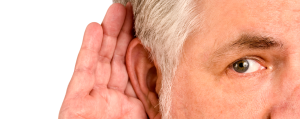NOISE IN THE WORKPLACE: WHAT TO DO IN CASE OF OCCUPATIONAL DEAFNESS

02 February 2018
Updated on July 07 2023
The incidence of occupational deafness in certain vocations cannot be understated. In Quebec, it is reported that there are nearly 1,500 new cases a year of occupational deafness that are recognized and compensated by the CNESST (Commission des normes, de l’équité, de la santé et de la sécurité du travail), previously known as the CSST. This unfortunate scenario poses a number of questions. How can employees protect their rights in the face of occupational deafness? What steps can be taken to gain access to hearing aids or other forms of compensation?
The Employer’s Obligations
It’s imperative to understand that employers in Quebec have a legal obligation to ensure the safety and well-being of their employees. This is anchored in the requirement that employers must register with the CNESST and make periodic insurance premium payments to Revenu Quebec. They are further required to implement all preventive, first-aid, and relief measures that are necessitated by their line of business. One of the paramount responsibilities of employers is to educate their employees about the risks inherent in their work environment, provide them with adequate training to protect themselves, and supply the appropriate safety equipment.
Despite the precautions taken, certain jobs may inherently carry a risk of hearing loss. Therefore, even with these measures in place, an employee may still suffer from partial or total hearing loss.
Steps to Obtain Recognition of Occupational Deafness
Under Section 272, if an employee discovers they’ve suffered a work-related injury, they have a period of six months to report it. This discovery could come from either an occupational physician or a family doctor. In order to file a claim, they must complete the required form provided by the Commission.
The law recognizes that an employee becomes aware of a work-related injury when their doctor informs them of the possibility of an occupational origin for their injury.
It is crucial that the employee provide the name and contact information of the employer or employers they were working for at the time the hearing loss likely happened on the claim form. provided an employee is unable to submit within the allotted six months, their request can still be accepted provided they can show good cause for the delay.
Eligibility Criteria
Recognition of occupational deafness by the CNESST is contingent on several conditions:
- The existence of a diagnosis of sensorineural deafness with hearing impairment must be confirmed.
- Evidence that the employee worked in one or more jobs that exposed them to excessive noise:
- This includes proof of exposure to excessive noise levels on a daily basis for a continuous period of at least two years (which could span multiple employers, provided that the continuity of exposure is maintained).
- Excessive noise, as defined by the CNESST, is any daily exposure to noise levels that exceed the limits permitted by Sections 131 and 134 of the Regulation Respecting Occupational Health and Safety.
- The employee must have contributed to the CSST/CNESST plan. Both active workers and retirees are eligible to file these claims.
However, it is worth noting that the eligibility criteria are subject to interpretation on a case-by-case basis, as the regulation does not specify a permissible threshold for the injury, nor an exposure time.
Worker’s Rights in the Face of Occupational Deafness
Once the CNESST acknowledges occupational deafness, they will cover the following:
- The cost of the hearing assessments
- Provision of one or two latest-generation hearing aids every five years
- The costs of services, cleaning products, and batteries for the hearing aids
- In certain cases, the costs of assistive listening devices (like listening systems for the television, telephone, etc.)
- Moreover, compensation may also be awarded if the hearing loss is at least 30 dB HL at 500, 1000, 2000, and 4000 Hz in the affected ear.
Importantly, these benefits are not limited to employees of companies alone. The AIAOD (Act Respecting Industrial Accidents and Occupational Diseases) also covers self-employed workers, company directors, and volunteers. While they aren’t required to register with the CNESST, they can voluntarily subscribe to optional personal protection in order to take advantage of the protections offered by the AIAOD.
In conclusion, while occupational deafness is a significant challenge in Quebec and across many other regions, there are clear legal frameworks and recourse mechanisms that workers can utilize to protect their rights and health. Through understanding these rights and following the right processes, workers can get the help they need and the compensation they deserve.
Preventive Measures
It’s essential to remember that ‘prevention is better than cure,’ a maxim that holds incredibly true when dealing with potential hearing loss. The magic of sound is a gift that we must strive to protect. To keep your ears healthy and your hearing sharp, certain precautionary measures in the workplace are not just important but are absolutely vital.
One of the most effective ways to prevent occupational deafness is regular use of ear protection devices. Whether you’re surrounded by the harmonious hum of a factory floor or the powerful percussion of a construction site, your ears are at risk. Earplugs or earmuffs can reduce the intensity of sound that reaches your delicate eardrums, acting as a protective barrier against the relentless waves of noise.
Avoiding prolonged exposure to loud noises is another crucial preventative step. The longer your ears are exposed to high decibel levels, the higher your risk of hearing impairment. Regular breaks away from the noise can give your ears a much-needed reprieve.
Keep in mind that when used improperly, even seemingly harmless gadgets like headphones can cause hearing loss. Utilizing noise-canceling headphones and setting volume restrictions on your devices can help avoid noise-induced hearing damage.
Your body is a marvelously integrated system, and the condition of your hearing is related to your general health. The blood flow to your ears may be improved with regular exercise, a balanced diet, and appropriate hydration, which will support better hearing.
Lastly, make no mistake about the importance of regular hearing checks. Hearing assessments can help catch potential issues early and take appropriate action. It’s much easier to prevent further damage than to try to restore lost hearing.
Remember, your hearing is irreplaceable. By taking these preventative measures, you’re investing in a future filled with the sweet symphony of life’s sounds.
Occupations at Risk
As we venture into the labyrinth of our daily work routines, we often overlook certain hazards that may pose a threat to our senses, including our hearing. Some vocations, in particular, carry an elevated risk of hearing loss due to the nature of their work environment.
Let’s embark on a tour of the professional world to better understand these jobs where the melody of work comes with the dissonant note of risk.
First off, the industrious construction industry. The symphony of jackhammers, power drills, and heavy machinery creates an orchestra of noise that can exceed safe decibel levels. Whether you’re a builder heaving bricks or a foreman overseeing the site, your ears are under siege from these sound waves.
Next up, the manufacturing sector. It’s a realm where productivity roars in the form of clanging metal, whirring engines, and rumbling machinery. Workers operating heavy-duty equipment in factories often face long-term exposure to loud noise, putting them at risk of occupational deafness.
The music industry too, ironically, poses a risk to the very sense it seeks to entertain. From rock musicians performing in front of thunderous amplifiers to orchestra players subjected to powerful sound waves, the risk of hearing loss is a crescendo that builds over time.
The aviation industry is another area of concern. Whether you’re a pilot navigating the skies or a ground crew member managing the ballet of aircraft on the tarmac, the roar of jet engines can have a significant impact on your hearing health.
Lastly, let’s not forget the military sector. Our brave servicemen and servicewomen are frequently exposed to loud explosions, gunfire, and machinery, often without adequate ear protection.
But remember, even if you work in these high-risk professions, there are ways to protect your hearing and preserve the precious gift of sound. Regular hearing checks, appropriate use of ear protection, and mindful practices can help prevent hearing loss. You hold the power to ensure that the beautiful concert of life doesn’t fade into silence.
References:
- Commission des normes, de l’équité, de la santé et de la sécurité du travail (CNESST). (2023). Employer Obligations.
https://www.cnesst.gouv.qc.ca/ - Government of Quebec. (2023). Section 272, Occupational health and safety act.
https://www.legisquebec.gouv.qc.ca/en/document/cs/s-2.1 - Canadian Centre for Occupational Health and Safety (CCOHS). (2023). Noise – Occupational Exposure Limits in Canada
https://www.ccohs.ca/oshanswers/phys_agents/noise/exposure_can.html - National Institute for Occupational Safety and Health (NIOSH). (2023). Preventing Occupational Hearing Loss – A Practical Guide.
https://www.cdc.gov/niosh/docs/96-110/default.html - World Health Organization (WHO). (2023). Make Listening Safe.
https://www.who.int/activities/making-listening-safe
Autres articles
DIGITAL HEARING AID TECHNOLOGY: BATTERY-POWERED OR RECHARGEABLE DEVICES?
When the time comes to invest in hearing aids, you don’t necessarily know which solution to choose. Certainly, models have…
EAR PLUGS FOR THE POOL: WHY AND HOW TO CHOOSE THEM
Updated on June 09 2023Protecting our hearing and maintaining a healthy balance system are essential, especially in aquatic environments where…
HEARING IMPAIRMENT: THE DIFFERENT TYPES AND DEGREES OF HEARING LOSS
Hearing loss isn’t the same for everybody: in fact, it may involve just one ear or both, affect the outer…


